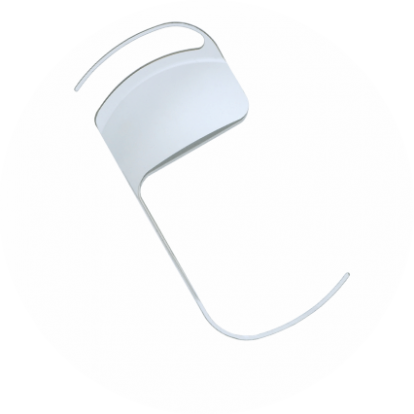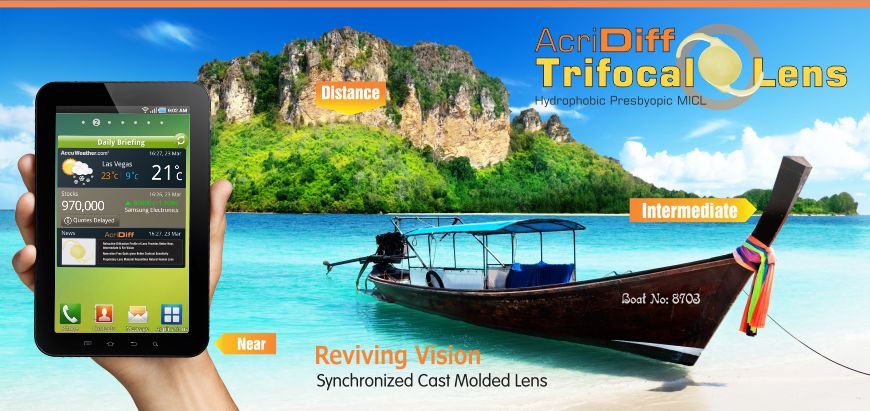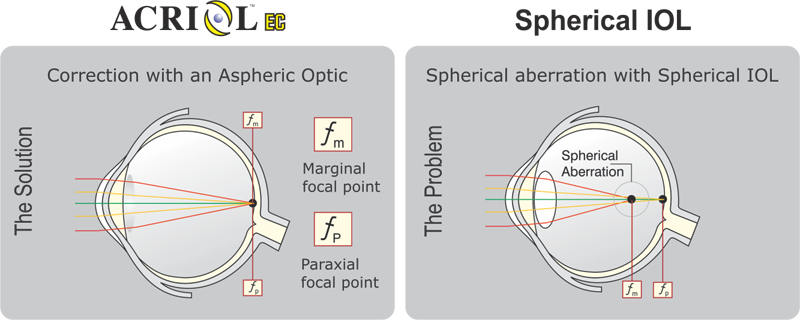لنز های تماسی نرم
About The Author
Rigid Gas Permeable
Rigid Gas Permeable : RGP
Gas permeable (GP) contact lenses are also known as rigid gas permeables (RGP’s). Although today’s gas permeable lenses are made of a rigid material that is not flexible, they differ greatly from the original hard lenses of yesteryear. Hard contact lenses made of polymethylmethacrylate (PMMA), were introduced in the 1930’s. Considered innovative and technologically advanced for the time, these hard lenses were nearly rendered obsolete by soft lenses that debuted in the early 70’s.
A decade later, rigid gas permeable lenses appeared on the scene. For clarification, vision specialists refer to these contacts by several names: gas permeable (GP) or Rigid Gas Permeables (RGP’s). RGP’s are constructed of flourosilicone acrylate.
There are several reasons why RGP’s may be the right choice for some patients, including:
- Eye health
- Ability to diffuse oxygen (unlike hard lenses)
- Less likely to transmit infection
- Easily cleaned
- Unlike soft lenses RGP’s retain shape and do not dehydrate
- Long lasting
- Clearer vision
- Custom made for each patient
- Adaptability
- Affordability
It is easy for people with healthy eyes to take vision for granted, but the human eye is a remarkable organ. The makeup of the human eye and the series of natural occurrences within it, that allow a human being to see clearly, is at the very least, astounding. For instance, the cornea’s surface is clear and contains absolutely no blood vessels. It is unlike any other tissue in the human body that utilizes blood vessels for nourishment and protection. Gas permeable contact lenses, allow oxygen to flow to the eye and assist the cornea in defending the eye from infection and disease; protecting overall eye health.
Gas permeable contact lenses promote eye health
The overall health of the cornea is extremely important. The cornea or the window of the eye, in a combined effort with the sclera (white part of the eye), lashes and tears protect the internal eye from debris and germs. The five layers of the cornea must remain clear without any opacity. Oxygen is essential in the process and is necessary to keep the cornea healthy so that it may in turn, protect the rest of the eye.
The surface of a gas permeable lens is more resistant to deposits than soft lenses. In contrast, rigid gas permeable lenses are less sponge-like and will not soak up substances that can house bacteria. GP lenses are more durable than soft lenses and because they are obviously harder, they retain better shape.Gas permeable contact lenses play an important role, allowing the proper interaction of the eye with oxygen from the air. The cornea draws oxygen from the air as tears act as a dissolving agent. The tears dissolve the oxygen from the air and transport it through the cornea, mimicking the job of blood vessels in other parts of the body. A second gas, carbon dioxide, is a byproduct of the process and is eliminated by the cornea. Interruption of this complex process makes the eye vulnerable to maladies such as corneal scarring, loss of transparency, blood vessels, and corneal warping.
Initially, gas permeable lenses take a little more getting used to than soft lenses. Within a short amount of time, however, the eyes become accustomed to wearing rigid lenses. Whereas the adaptability to soft lenses is almost immediate, it could take up to a week or two before patients find gas permeables as comfortable.
ContactLensVisualRehabilitationinKeratoconusand CornealKeratoplasty
Keratoconus is the most common corneal distrophy. It’s a noninflammatory progressive thinning process that leads to conical ectasia of the cornea, causing high myopia and astigmatism. Many treatment choices include spectacle correction and contact lens wear, collagen cross linking, intracorneal ring segments implantation and finally keratoplasty. Contact lenses are commonly used toreduceastigmatismandincreasevision.Therearevarioustypesof lensesareavailable.Wereviewedsoftcontactlenses,rigidgas permeable contact lenses, piggyback contact lenses, hybrid contact lenses and scleral-semiscleral contact lenses in keratoconus management.Thesurgicaloptioniskeratoplasty,butevenaftersuturremoval,highastigmatismmaystilexists.Therefore,contact lens is an adequate treatment option to correct astigmatism after keratoplasty.
Central Corneal Opacity
Central Corneal Opacity

Specification
Material:PMMA
Optic Size:4.00 X 6.00 mm
Overall Length:13.50 mm
hydrophopbic -ACRIOL EC

Optic
Renders excellent Depth of Focus.
The optic is Aberration Neutral that do not induce any aberration to the optical system.
Manufacturing Procedure
Synchronized Cast Molding Manufacturing procedure, achieves the specifications like best Asphericity, Power Accuracy & Square Edge.
Material
The proprietary hydrophobic acrylic material having yellow tint exactly similar to the natural lens color of an adult eye.
Design
The design ensures perfect stability inside the capsular bag, lowering LEC migration and incidence of PCO.
Specification
Optic Type: Biconvex
A Constant: 118.8
Incision Size: Sub 2.00 mm
Refractive Index: 1.525
A. C. Depth: 5.10 mm
Diopter: +10.0 D to +30.0 D
(With 0.5 D Increments)
(All Theoretical Values)
Common Features Acriol EC
Anterior surface treated with Tackiness Inhibiting Technology (TIT)
Posterior surface treated with Tackiness Enhancing Technology (TET)
Yellow tint-Original Color of Lens in an adult eye.
Special Features Acriol EC & Acriol
Sub 2.0 mm incision.
Synchronized Molding Process.
Square Edge.
Single Piece Design.
Unfolding time < 5 sec.
Low TG proprietary Hydrophobic acrylic material.
Oté Sensation
 Oté Sensation
Oté Sensation
Innovative all-in-one solution with duo antibacterial system and extra wearing comfort due to the addition of high quality Sodium Hyaluronate.
|
Definition: |
Besides thorough protein removal, this innovative Hyaluronic solution has a double antibacterial action. By the addition of high quality Hyaluronate, Oté Sensation offers sensationally high wearing comfort. |
|
Composition: |
PHMB, Polyquaternium, Hyaluronate. |
|
Purpose: |
Clean, insert, condition, hydrate and remove protein layer, disinfect, rinse and moisten all types of soft contact lenses. |
|
Available in: |
Starter Pack (1x100ml + lens case) 360ml Pack (1x360ml + lens case) Multi Pack (3x360ml + 1x100ml + lens case) |
Hydrophilic- Ocuflex


Material Specification:
Material: Acrylic
Refractive Index: 1.465
U.V. Block: 430 nm
Water Content: 26%
Characteristics:
Optic
Type: Biconvex
A-Constant: 118.0
Angulations*: 0
Lens Style: RYCF
Optic Size: 5.75 mm
Overall Length: 12.00 mm
*Thes
e Values are estimates only. It is recommended that the surgeon derives his/her own values based on individual clinical experience.
Features:
Single piece foldable lens
The lens design ensures smooth insertion and proper centeration inside the eye.
Material is UV block incorporated ensuring adequate UV protection.
Optics are YAG Laser friendly.
Non lonic nature of material ensures resistance to deposits thus lowering the incidence of PCO.
Steam sterilization does away with the hazards of ETO residue.
senso select
تمامی لنز های سخت منفد دار موجود در شرکت در قالب کاتالوگ اصلی کمپانی موجوذ میباشند .
دانلوقبدیب ایطیبل بای ب لبب
test3659263

تیتر های اصلی :
خانه : home
محصولات products
درباره ی ما about us
تازه های اخبار news
پؤوهش research
آموزش education
تماس با ما contact us
نمایندگی ها agancies
رینگ های داخل چشمی
رینگ آنیدریا Aniridia ring
مواد سازنده : PMMA
قطر : 10.2
تعداد سوراخ : 2 عدد
رینگ کولوبوما coloboma ring
مواد سازنده : PMMA
قطر : 12 -13 میلی متر ( در پله های نیم سانتی )
آیلت : 02
حلقه ی اندوکپسولار
Endocapsular ring
مواد سازنده : PMMA
قطر : 12 -.5 13 میلی متر ( در پله های نیم سانتی )
تعداد سوراخ : 2/3
حلقه ی سیونی cionni
مواد سازنده : PMMA
قطر : 12 12.5- میلی متر ( در پله های نیم سانتی )
آیلت : 3 عدد
اینجکتور و کارتریج ها
بیضی شکل
Outer Ø = 1.85 mm
توصیف :
یک اینجکتور یک بار مصرف در یک بسته ی استریل
یک کارتریج یک بار مصرف در یک بسته ی استریل
مراحل استفاده :
کارتریج و اینجکتور برای باز کردن و داخل چشم گذاشتن یک لنز داخل چشمی تاشو استفاده میشوند .




